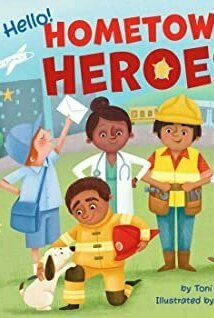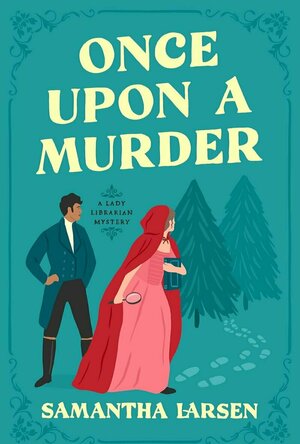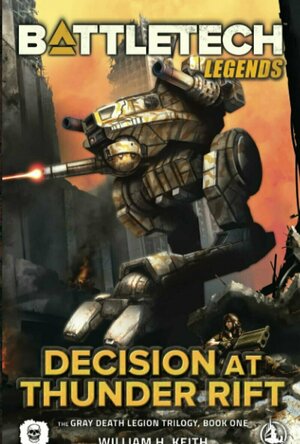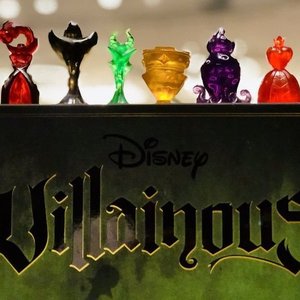Search
Search results
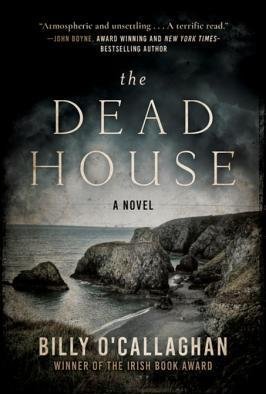
Dead House
Book
This best-selling debut by an award-winning writer is both an eerie contemporary ghost story and a...
Mark @ Carstairs Considers (2452 KP) rated On Thin Icing in Books
Jan 22, 2022 (Updated Jan 22, 2022)
Thin on Plot
Jules Capshaw is thrilled to be catering the board retreat for the Oregon Shakespeare Festival at the Lake of the Woods center in the mountains above Ashland, Oregon. However, the weekend doesn’t go nearly as smoothly as Jules hopes. First, her estranged husband shows up, proving to be both a help and a distraction. Then the center’s bar tender is killed and stuffed in a freezer. Now, as a winter storm rages, Jules can’t help but wonder if she is catering to a killer.
Obviously, this is a classic mystery set up, but it failed to fully deliver for me. The mystery was too thin, and the book covers with too many cooking scenes. Still, Jules does piece things together, and the ending is logical. I also appreciated the time spent on Jules’s relationship with her husband since that’s been in the background in the first two books in the series. Obviously, we don’t get all the series regulars, but everyone at least gets a cameo, which makes me happy since I do like them. We get seven recipes at the end, and they range from dinner options to plenty of pastries and desserts. I hope the plot in the next in the series is stronger.
Obviously, this is a classic mystery set up, but it failed to fully deliver for me. The mystery was too thin, and the book covers with too many cooking scenes. Still, Jules does piece things together, and the ending is logical. I also appreciated the time spent on Jules’s relationship with her husband since that’s been in the background in the first two books in the series. Obviously, we don’t get all the series regulars, but everyone at least gets a cameo, which makes me happy since I do like them. We get seven recipes at the end, and they range from dinner options to plenty of pastries and desserts. I hope the plot in the next in the series is stronger.
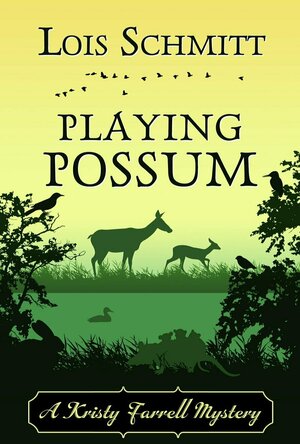
Playing Possum (A Kristy Farrell Mystery #3)
Book
Murder, mayhem, and crawling with animals… When animals start mysteriously disappearing from...
Cozy Mystery
Lindsay (1779 KP) rated Hello! Hometown Heroes in Books
Jan 12, 2022
You are looking to introduce your child or children to your hometown heroes in your neighborhood. Well, “Hello! Hometown Heroes” helps to introduce these heroes that could be into your community. These heroes are just ordinary people.
This book is inclusive and represents any child or children; It could be anyone’s neighborhood. The book is a gentle rhyming book. It is suitable for young readers to enjoy and learn to read. The books are ideal for toddlers to hold as the book thickness stands made of a strong board book.
I enjoyed the pictures as they are colorful and enjoyable to look at. This book takes you on a tour of the neighborhood. Meet different heroes throughout the book. You can be heroes to be kind and friendly to your neighbors and say hello. Can your child or children tell you who are heroes in your hometown? Who do you think is a hometown hero in your neighborhood? I believe there are many. Some mentioned in this book are firefighters, teachers, and construction workers. Maybe a librarian is a hometown hero for you or your child. Toddlers can hold and look at this book as well. It is a sturdy book for all children, from toddlers to young readers.
This book is inclusive and represents any child or children; It could be anyone’s neighborhood. The book is a gentle rhyming book. It is suitable for young readers to enjoy and learn to read. The books are ideal for toddlers to hold as the book thickness stands made of a strong board book.
I enjoyed the pictures as they are colorful and enjoyable to look at. This book takes you on a tour of the neighborhood. Meet different heroes throughout the book. You can be heroes to be kind and friendly to your neighbors and say hello. Can your child or children tell you who are heroes in your hometown? Who do you think is a hometown hero in your neighborhood? I believe there are many. Some mentioned in this book are firefighters, teachers, and construction workers. Maybe a librarian is a hometown hero for you or your child. Toddlers can hold and look at this book as well. It is a sturdy book for all children, from toddlers to young readers.
Mark @ Carstairs Considers (2452 KP) rated Death in a Pale Hue in Books
Jul 20, 2023 (Updated Jul 20, 2023)
Unfortunately, This Was a Pale Debut
Jill Madison has returned home to Apple Grove to run the new art center named after her late mother. She is trying to prove herself to the board as she gets it ready to open, but a late night burglary causes issues, especially when the only piece stolen was something of great personal value to Jill. Then the contractors working on the renovation find a skeleton in the basement. When Jill figures out she knew the victim, she steps up her efforts to try to figure out what is going on. Can she do it without putting her job in jeopardy?
This sounded like a fun debut, but unfortunately, it wasn’t as good as I hoped it would be. The book needed another edit to put in more details or make them consistent. I was constantly spending brain power on things like how the art center was supposed to work rather than the mystery. I found the pacing of the mystery uneven and the villain easy to spot. On the other hand, the climax was suspenseful. And I loved the characters. Normally, I’d be looking forward to spending more time with them, but the rest of the weaknesses are giving me pause about continuing the series.
This sounded like a fun debut, but unfortunately, it wasn’t as good as I hoped it would be. The book needed another edit to put in more details or make them consistent. I was constantly spending brain power on things like how the art center was supposed to work rather than the mystery. I found the pacing of the mystery uneven and the villain easy to spot. On the other hand, the climax was suspenseful. And I loved the characters. Normally, I’d be looking forward to spending more time with them, but the rest of the weaknesses are giving me pause about continuing the series.
Mark @ Carstairs Considers (2452 KP) rated Once Upon a Murder in Books
Feb 21, 2024
Not as Strong as the First Book
It’s 1784, and spinster Tiffany Woodall is hoping to put the chaos and intrigue of the last few months behind her. However, when she finds a dead body on her way to work at the castle one morning, she knows that isn’t going to happen. When the local bookseller, the man Tiffany loves, is accused of the crime, she can’t help but get involved. Can she figure out what happened?
The first book in this series was one of my favorites of last year. This book wasn’t as good, but it was still enjoyable. As with the first book, the mystery takes a backseat at times. However, here the other storylines weren’t as compelling. This is especially true of the romance. I was glad it wasn’t dragged out too much and I bought it in a way I wouldn’t in other series, but I wasn’t as invested in it. When the murder really kicks in during the second half, I was more fully on board, and I love how that was resolved. Likewise, I still loved all the characters and did enjoy seeing what happened to them. Fans of the first will want to pick this up. If you missed the first, you’ll definitely want to start there.
The first book in this series was one of my favorites of last year. This book wasn’t as good, but it was still enjoyable. As with the first book, the mystery takes a backseat at times. However, here the other storylines weren’t as compelling. This is especially true of the romance. I was glad it wasn’t dragged out too much and I bought it in a way I wouldn’t in other series, but I wasn’t as invested in it. When the murder really kicks in during the second half, I was more fully on board, and I love how that was resolved. Likewise, I still loved all the characters and did enjoy seeing what happened to them. Fans of the first will want to pick this up. If you missed the first, you’ll definitely want to start there.
Lyndsey Gollogly (2893 KP) rated Conclave (Devils Bight 3.5) in Books
Jun 27, 2024
125 of 220
Kindle
Conclave ( Devils Night 3.5)
By Penelope Douglas
⭐️⭐️⭐️
DAMON
Will is gone. He hasn't been seen in months, and the texts coming from his phone are almost certainly forged. Something's wrong. We need to act now.
Michael is ready to tear down The Cove, Rika's hiding something, Evans Crist is a threat, and Winter's father is still out there. Everyone is off in a million directions, and we're vulnerable.
It's time to do this. It's time to claim our place.
RIKA
A few years ago, I never thought I'd be here. On board Pithom. Miles out at sea. At a table with Michael Crist, Kai Mori, and Damon Torrance—men I now consider family.
We've locked ourselves on this yacht for however long it takes to address our agenda, and we won't leave until everything is on the table. Even things I don't want to talk about. Things Michael doesn't know.
We will find Will. We will solidify our plans, and we will remove any threats.
If we survive Conclave.
This was a quick catch-up with the characters also a lead into the next book. It was a quick read and I like it I’m looking forward to the next one.
Kindle
Conclave ( Devils Night 3.5)
By Penelope Douglas
⭐️⭐️⭐️
DAMON
Will is gone. He hasn't been seen in months, and the texts coming from his phone are almost certainly forged. Something's wrong. We need to act now.
Michael is ready to tear down The Cove, Rika's hiding something, Evans Crist is a threat, and Winter's father is still out there. Everyone is off in a million directions, and we're vulnerable.
It's time to do this. It's time to claim our place.
RIKA
A few years ago, I never thought I'd be here. On board Pithom. Miles out at sea. At a table with Michael Crist, Kai Mori, and Damon Torrance—men I now consider family.
We've locked ourselves on this yacht for however long it takes to address our agenda, and we won't leave until everything is on the table. Even things I don't want to talk about. Things Michael doesn't know.
We will find Will. We will solidify our plans, and we will remove any threats.
If we survive Conclave.
This was a quick catch-up with the characters also a lead into the next book. It was a quick read and I like it I’m looking forward to the next one.
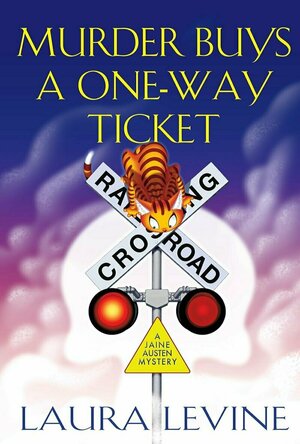
Murder Buys a One-Way Ticket
Book
It’s the funny side of homicide in acclaimed TV comedy writer and novelist Laura Levine’s newest...
David McK (3649 KP) rated Decision at Thunder Rift: Book One of The Saga of the Gray Death Legion in Books
Mar 9, 2025
Battletech.
Giant stompy robots, very much - it seems to me - the Western version of Japanese mecha.
A board (miniatures) game that's been around since the 1980s, with a fair few PC games and other associated elements spin-offs.
With said spin-offs including a series of novels which - although aware they existed (in much the same way as do Start Trek or Dr Who novels) I never really read any of them - I think I might have tried one, back in the mid 90s or so, but it was forgettable at best.
So, when I was recently looking for something light to read in between bouts of heavier literature (I hate that word), I thought I would give this one a try, since it is - apparently - #1 in the entire series, and since it was on sale for something silly like 99p on Kindle.
What I got was pretty much what I expected: a sci-fi war story, where the 'mechs are basically the equivalent of futuristic tanks, with a light smattering of intrigue but with the real draw, of course, being on the mech vs mech action.
I might pick up some more in the series, but don't think I'll be going out of my way to do so.
Giant stompy robots, very much - it seems to me - the Western version of Japanese mecha.
A board (miniatures) game that's been around since the 1980s, with a fair few PC games and other associated elements spin-offs.
With said spin-offs including a series of novels which - although aware they existed (in much the same way as do Start Trek or Dr Who novels) I never really read any of them - I think I might have tried one, back in the mid 90s or so, but it was forgettable at best.
So, when I was recently looking for something light to read in between bouts of heavier literature (I hate that word), I thought I would give this one a try, since it is - apparently - #1 in the entire series, and since it was on sale for something silly like 99p on Kindle.
What I got was pretty much what I expected: a sci-fi war story, where the 'mechs are basically the equivalent of futuristic tanks, with a light smattering of intrigue but with the real draw, of course, being on the mech vs mech action.
I might pick up some more in the series, but don't think I'll be going out of my way to do so.
Purple Phoenix Games (2266 KP) rated Disney Villainous in Tabletop Games
Jan 6, 2020
I am a sucker for a great theme. Or themes that turn the game around. Such is the case with Disney Villainous. Not often does a game allow you to play AS the bad guys against the good guys. That premise is interesting to me, and as I saw this release last year, I just knew I had to have it. Now that I have played it several times, with and without the first expansion, what do I have to say about it? Read on.
Disney Villainous (“Villainous” from here on) is a card game that pits players against each other in a race to complete individualized objectives to win the game. Players are in direct competition with each other and have devices to employ to spoil the plans of their competitors. Can Maleficent place out curses on all the lands in her realm before Hades can have three Titans storm on Mount Olympus? Can Prince John attain 20 power before either of them win the game? Such is Villainous.
DISCLAIMER: This game has a few standalone expansions now, with more on the way I’m sure. We are using components from the base game as well as the first expansion, “Wicked to the Core,” for this review. Should we decide to review the expansions as standalone games, we will link to the new material here. Furthermore, I do not intend to cover every single rule included in the rule book, but will describe the overall game flow and major rule set so that our readers may get a sense of how the game plays. For more in depth rules, you may purchase a copy from the publisher directly or from your FLGS. -T
To setup, each player will choose a big bad to play. Each character comes equipped with a colored pawn, a realm board with four locations, a deck of cards with matching pawn colored backs, a Fate deck with white back, and a playbook with tips on how to play that character. Also give every player a reference card that details the actions available. Shuffle each deck separately, give the starting player zero power from the cauldron, the second player one power, the third player two power, etc. Each player draws a hand of four colored back cards. Begin the game with the pawns on the leftmost location on the realm board and you are now ready to play.
Play works thusly: move your pawn to any unlocked location, complete any or all actions available at the location, draw your hand back up to four, next player. You MUST move on your turn, unless a card allows you to stay at your current location on your next turn. Once moved, the location will either show two or four options for actions. These could include play a card, activate a card, discard a card, gain power tokens, move an item or ally, move a Hero card, vanquish a Hero, or play cards from an opponent’s Fate deck. Some actions are self-explanatory (gain power tokens, et al), but some require further explanation.
Some cards will have an activation symbol displayed on them. This means that a pawn has to have been moved to a location with an activate card symbol, and the player must pay to activate the card for its special abilities. Easy. Moving an item, ally, or Hero typically means physically moving the cards from one location to another adjacent location. This is important for some villains’ objectives: cards need to enter play in one location but travel to another as part of the win condition. When a villain moves to a location with the Fate symbol, they will choose an opponent, look at the top two cards of their Fate deck, and choose one card to play and one card to discard. These are especially devious and can greatly hinder the player’s progress. In addition, when a Fate card resides on a realm board it covers the top symbols of a location, thus nullifying the player’s ability to use these symbols on future turns. Using the vanquish symbol requires a Hero to have been played on your board, and having enough strength in allies and items to meet or overcome the Hero’s strength. Heroes and any allies/items used in the fight are then all discarded to the appropriate discard piles.
Play continues in this manner until one player has achieved their victory condition.
Components. I have good and bad news. Good news first. The components are absolutely fabulous! Those pawns. SOOOO good. Each is a somewhat abstracted figure of the villain, but with some concrete callbacks and recognizable features. They are just so dang fun to handle and play with. I think the cards are good quality, but I forgot what they feel like outside of the sleeves I put mine in. The board components are great, the cauldron is flimsy, unnecessary, and unwieldy when putting back in the box, especially if you have one or more expansions. I have not found a decent way to put everything back in one box, so I am resigned to having both boxes with me every time I want to play. That’s the bad. I also have put all my sleeved cards into plastic deck boxes in the main game box along with the cauldron. Everything else gets put in the expansion box. I hope a better storage solution is on the horizon along with future expansions…
So as you can see from our rating graphic on top that we are spread out on this one. I love it, but I don’t see it ever breaching my Top 10 list. It does have a tendency to overstay its welcome with all the Fate cards making it more and more difficult to win the game. Once a player seems to be near winning every other player gangs up, or seems to when I have played. I get that it may come off as a negative, and the play length as well, but it’s all part of villains out-villaining each other. While Josh rated it as a three and may not ever willingly ask to play it, I have it at a five because I think it’s a great game with a wonderful theme, amazing components, and tons of expandability. With that, we at Purple Phoenix Games give Disney Villainous a boding 16 / 24. If you are a big Disney fan, can live with the Take That, and want something that looks incredible on the table, pick it up.
Disney Villainous (“Villainous” from here on) is a card game that pits players against each other in a race to complete individualized objectives to win the game. Players are in direct competition with each other and have devices to employ to spoil the plans of their competitors. Can Maleficent place out curses on all the lands in her realm before Hades can have three Titans storm on Mount Olympus? Can Prince John attain 20 power before either of them win the game? Such is Villainous.
DISCLAIMER: This game has a few standalone expansions now, with more on the way I’m sure. We are using components from the base game as well as the first expansion, “Wicked to the Core,” for this review. Should we decide to review the expansions as standalone games, we will link to the new material here. Furthermore, I do not intend to cover every single rule included in the rule book, but will describe the overall game flow and major rule set so that our readers may get a sense of how the game plays. For more in depth rules, you may purchase a copy from the publisher directly or from your FLGS. -T
To setup, each player will choose a big bad to play. Each character comes equipped with a colored pawn, a realm board with four locations, a deck of cards with matching pawn colored backs, a Fate deck with white back, and a playbook with tips on how to play that character. Also give every player a reference card that details the actions available. Shuffle each deck separately, give the starting player zero power from the cauldron, the second player one power, the third player two power, etc. Each player draws a hand of four colored back cards. Begin the game with the pawns on the leftmost location on the realm board and you are now ready to play.
Play works thusly: move your pawn to any unlocked location, complete any or all actions available at the location, draw your hand back up to four, next player. You MUST move on your turn, unless a card allows you to stay at your current location on your next turn. Once moved, the location will either show two or four options for actions. These could include play a card, activate a card, discard a card, gain power tokens, move an item or ally, move a Hero card, vanquish a Hero, or play cards from an opponent’s Fate deck. Some actions are self-explanatory (gain power tokens, et al), but some require further explanation.
Some cards will have an activation symbol displayed on them. This means that a pawn has to have been moved to a location with an activate card symbol, and the player must pay to activate the card for its special abilities. Easy. Moving an item, ally, or Hero typically means physically moving the cards from one location to another adjacent location. This is important for some villains’ objectives: cards need to enter play in one location but travel to another as part of the win condition. When a villain moves to a location with the Fate symbol, they will choose an opponent, look at the top two cards of their Fate deck, and choose one card to play and one card to discard. These are especially devious and can greatly hinder the player’s progress. In addition, when a Fate card resides on a realm board it covers the top symbols of a location, thus nullifying the player’s ability to use these symbols on future turns. Using the vanquish symbol requires a Hero to have been played on your board, and having enough strength in allies and items to meet or overcome the Hero’s strength. Heroes and any allies/items used in the fight are then all discarded to the appropriate discard piles.
Play continues in this manner until one player has achieved their victory condition.
Components. I have good and bad news. Good news first. The components are absolutely fabulous! Those pawns. SOOOO good. Each is a somewhat abstracted figure of the villain, but with some concrete callbacks and recognizable features. They are just so dang fun to handle and play with. I think the cards are good quality, but I forgot what they feel like outside of the sleeves I put mine in. The board components are great, the cauldron is flimsy, unnecessary, and unwieldy when putting back in the box, especially if you have one or more expansions. I have not found a decent way to put everything back in one box, so I am resigned to having both boxes with me every time I want to play. That’s the bad. I also have put all my sleeved cards into plastic deck boxes in the main game box along with the cauldron. Everything else gets put in the expansion box. I hope a better storage solution is on the horizon along with future expansions…
So as you can see from our rating graphic on top that we are spread out on this one. I love it, but I don’t see it ever breaching my Top 10 list. It does have a tendency to overstay its welcome with all the Fate cards making it more and more difficult to win the game. Once a player seems to be near winning every other player gangs up, or seems to when I have played. I get that it may come off as a negative, and the play length as well, but it’s all part of villains out-villaining each other. While Josh rated it as a three and may not ever willingly ask to play it, I have it at a five because I think it’s a great game with a wonderful theme, amazing components, and tons of expandability. With that, we at Purple Phoenix Games give Disney Villainous a boding 16 / 24. If you are a big Disney fan, can live with the Take That, and want something that looks incredible on the table, pick it up.

